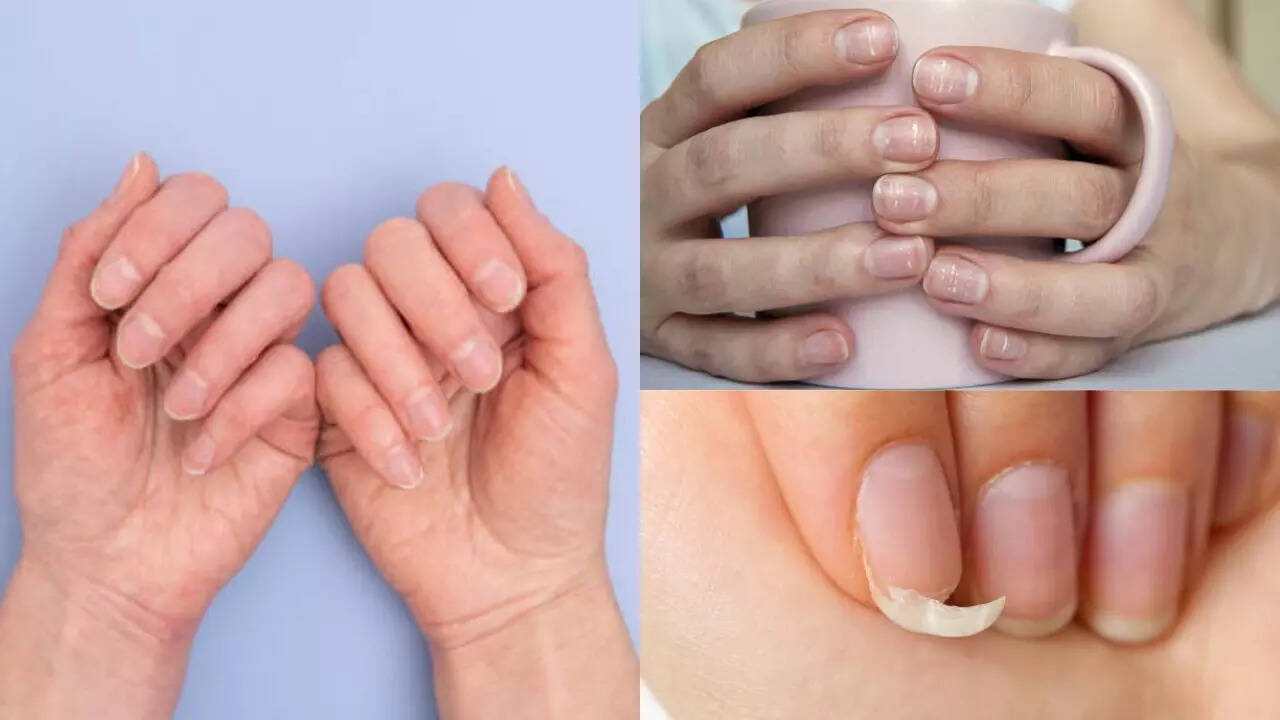-
news
-
Health
Axle
Nail abnormalities: changes in nail color, size or texture are not normal and may indicate underlying health issues, nutrient deficiency or deadly diseases. Doctors say nail change is a valuable health indicator, so if you are looking at small round depression, spoon, red or white band -like nails, or yellow in color, be sure to see a doctor soon.

Many people ignore these small signs, but they can be a way to indicate the body’s more important concern.
Your nails provide the most important information about your health. According to doctors, apart from being a widow of personality and hygiene about a person, your nails reveal a lot about your overall welfare. Many changes in their color, size, or texture indicate the underlying health issues or the shortcomings of nutrients.
Many people ignore these small signs, but they can be the body’s way of indicating more important concern. Here are some changes in your nails that can point to a hidden disease or deficiency.
Nails
Nail pitting occurs when you appear small and round depression or notch in your nails. It is common in those who have skin disorders such as psoriasis and eczema. Nail pitting is also related to Alopecia Areta – an autoimmune disease that causes hair loss.
According to doctors, if your nail pitting is accompanied by joint pain or crust patches on the skin, medical evaluation is extremely important.
Nail clubbing
You can see over time that the tips of your fingers become bigger and the nails become curved around the fingers. Doctors say that clubbed nails are often a sign of a health condition, which requires immediate treatment, such as lung cancer. Some other serious conditions due to this include:
- Low oxygen in blood
- Heart problem
- Liver cirrhosis
- Gastrointestinal problems
If you have nail clubbing, you may have nails:
- Feel soft and like a sponge.
- Feel hot for touch.
- Giving the presence of a round, bulging shape, an upside-down spoon.
- see red.
- Wide and wrap around the edges of your fingers.
Nail clubbing affects some of your nails or all of them and mostly starts in your thumb and index finger before spreading to other nails.
Terry’s nails
Terry’s nails look white on top of most of your nails, leaving a narrow red or pink band at the top of your nails. It is a type of leukonichia and is characterized by a ground-glass opative of nails.
According to experts, this condition can be a sign of liver issues, conjugent heart failure, or even underlying systemic and fatal diseases such as diabetes. However, sometimes, symptoms of terry nails can also be a common part of aging.
Yellow nail syndrome
If you have a yellow nail syndrome, your nails will start getting thick and growing at slow, resulting in changing your nails yellow-yellow color.
Nails affected by yellow nail syndrome can be signs of lymphedma – inflammation due to respiratory issues such as fluid buildup, chronic cough, bronchiectasis or pleural drifts. This condition usually affects adults over 50 years of age.
Spoon nail
Spoon nails, also known as coilonichia, are indexed nails. Instead of growing straight, your nails look concave like a spoon. Doctors say that most often, teaspoon nail is a sign of lack of iron deficiency because your body cannot do:
- Iron absorbing
- Does not consume enough iron
- Your intestines have celiac disease, cancer or bleeding
- Lose iron with excessive menstruation
In some cases, the coilonichia is also hereditary or a nail can result in a nail bed, such as thumb-sucking or very tight shoes in infants and children in people of all ages. Sometimes, coilonichia indicates another medical condition.
Now get the latest news with health and braking news and top headlines worldwide.
Signs of nail disease health conditions changeChanges in your nailsChange the shape of nail shapesDepressionAbandonedNail Clubing Lever Cirrhosis Heart IssueRed or pink band on top heart failureYellow nail syndrome respiratory issueSpoon nail anemia low iron in bloodCeliac disease lung cancer excessive menstruation


